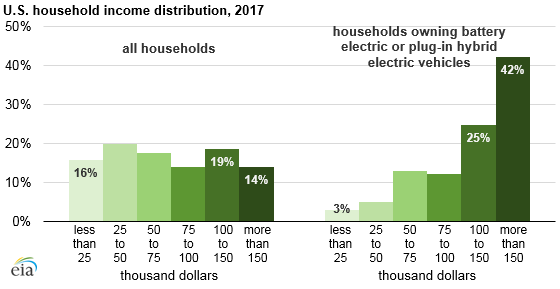As $7,500 Federal Subsidies Expire, Electric Vehicles Are About to Get More Expensive
You may not have known this, but the federal government has been subsidizing electric vehicles (EV’s) to the tune of a $7,500 tax credit for every electric vehicle sold.
In fact, the subsidy is a major reason why we’re starting to see more Tesla’s tooling around the Twin Cities, but there’s a catch: the subsidy begins to disappear after a manufacturer has sold 200,000 units, and Tesla has hit this threshold, meaning the growth of Elon’s EV’s could slow moving forward.
The phase out of the tax credits comes at a bad time for Tesla, after the EV automaker announced it would be increasing the price of the Model 3 by almost $4,000 — to $38,990. Which is an admission — without formally saying it — that the $35,000 price point he promised for years isn’t tenable and that Tesla would lose money on each sale at that price point. And it’s not just Tesla that can’t make EV’s pencil out.
GM has said they hope to start making a profit on EV’s by early next decade. A main reason why EV’s are currently unprofitable is that the high upfront cost of purchasing an electric car doesn’t save consumers money in the long run. According to an article at InsideSources:
“The economic truth is that most people can’t afford a nearly $40,000 electric car like the Tesla 3, or even a $30,000 electric car like the Nissan Leaf, which is the least expensive electric car on the market. It costs twice as much as an otherwise-similar compact economy car without the electric drivetrain.
Unless the cost of gas doubles, which seems unlikely given the massive increase in supply, it is unlikely the Leaf will ever save its owner any money, even if he never spends a cent on [charging the car].
The $15,000 price difference between the Leaf and the non-electric equivalent — a car like Nissan’s Versa hatchback, which stickers for $12,460 to start — buys about 6,250 gallons of regular unleaded gasoline at current prices (about $2.40 nationally).
That is enough gas to buy a small ocean of gas. Enough to fill the typical economy compact car’s 12-gallon tank about 520 times. If we assume the car averages 35 miles per gallon (420 miles per tank) that works out to about 218,000 miles of driving before the Leaf offers any economic advantage to a prospective buyer — leaving aside the range/recharge issues, which aren’t small potatoes considerations for most people.
It takes about 15 years to accrue 218,000 miles on the odometer at 15,000 miles per year. And 15 years is about five years longer than most people keep a car before trading it in and buying another one.”
In fact, electric car batteries are only warrantied for eight years, and 100,000 miles, which is half of the time it would take to start saving money on gas. Furthermore, replacement batteries will cost anywhere between $6,000 to $9,000, which means there are potentially large price tags waiting for electric vehicle buyers, which pushes the payback date out even further.
Similarly, the LA Times reports that the base price of a gasoline-powered Hyundai Kona compact SUV, for instance, is $18,740 and the all-electric version is $36,950, before government incentives, nearly double the cost of the conventional model.
Speaking of government incentives, the Walz administration and the DFL led house released a budget that would have created a $2,500 rebate for electric car buyers in Minnesota. It is unclear whether last week’s announcement by Governor Walz has affected his EV goals for the state. but a document released this spring by the Department of Transportation stated the Governor wanted 200,000 on the road by 2030.
Assuming each of these cars got the rebate, it would cost the state $500 million to subsidize these cars.
Federal data show 42 percent of EV buyers make more than $150,000 per year. If rich people want to buy EV’s that’s their prerogative, but the Governor’s plan to force low and middle income Minnesotans to subsidize the wealthy so they can feel green is simply reprehensible.
